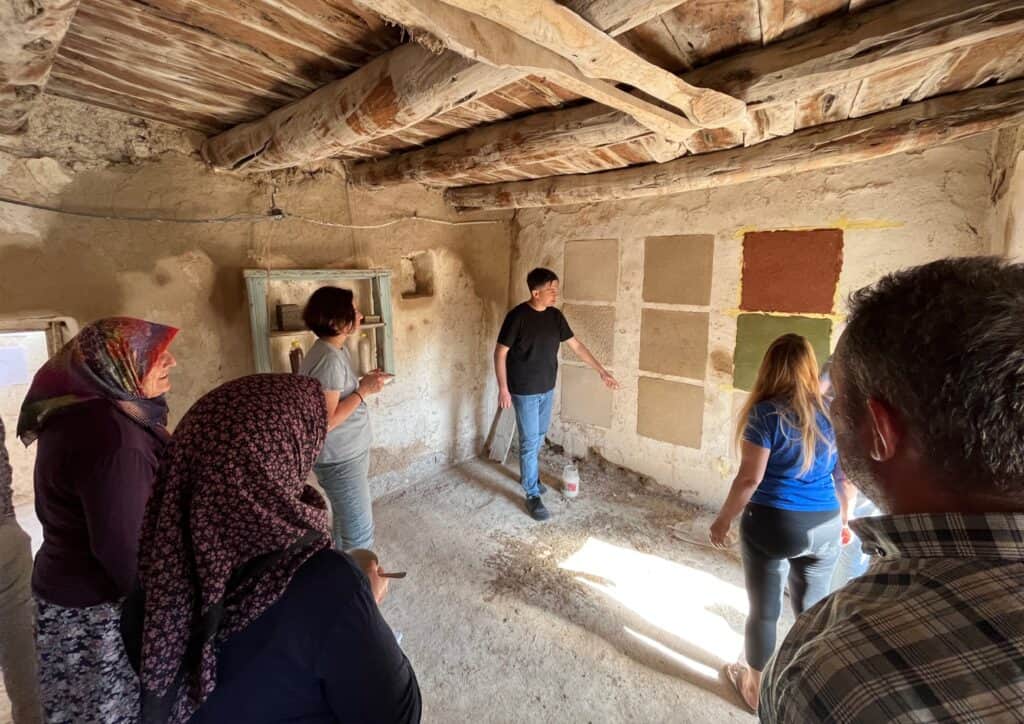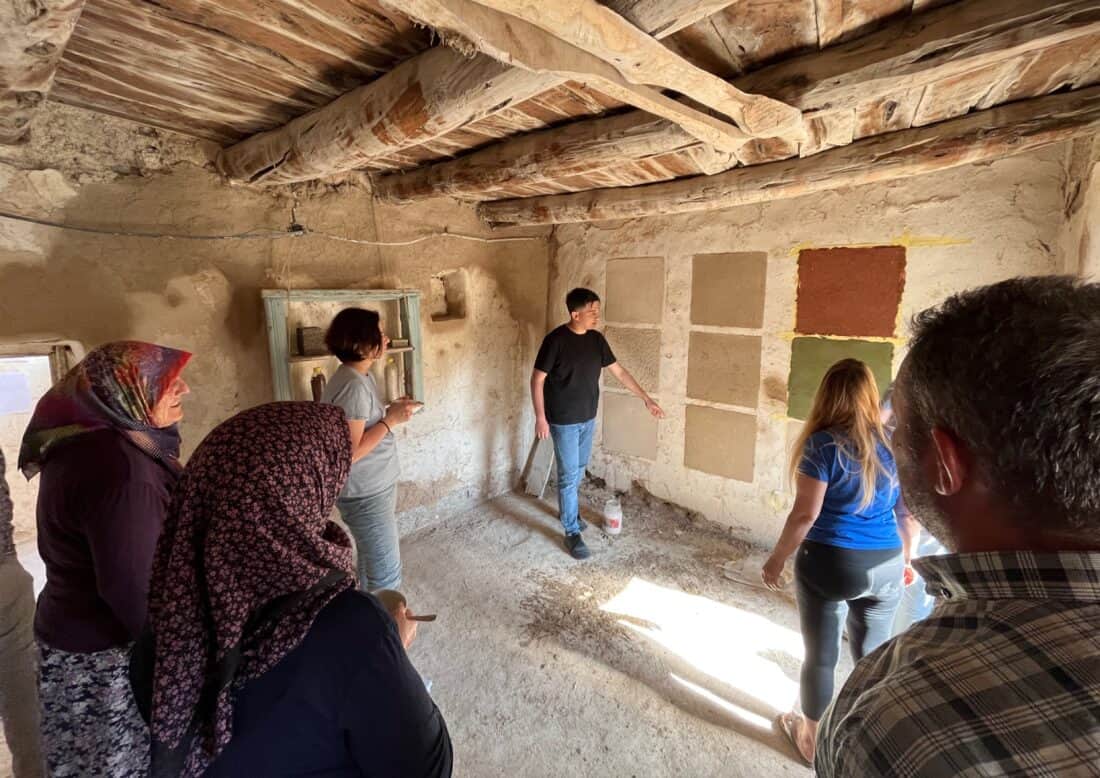Travel report Uzunyayla Rural Research

The excursion took place in the summer semester 2023 as a Master’s elective of the teaching and research field of architectural theory at RWTH Aachen University in cooperation with the Faculty of Architecture at Abdullah Gül University Kayseri.
Context and questions
Uzunyayla (translated from Turkish: long plateau, large winter pasture) is a rural region near Kayseri in Turkey, which consists of a wide river plain and a flat mountain plain. There are 42 small Circassian villages along two river courses, which mainly live from grain cultivation and livestock farming. At the beginning of the 19th century, the Circassians came from the Caucasus and were settled here by the Ottomans. Today, the population is declining and the inhabitants are getting older and older. This demographic change is having a major impact on the villages.
Together with architecture students and lecturers from Abdullah Gül University in Kayseri and in dialogue with the residents, we explored the question of what could improve the future of the village. The results of the workshop will serve as a basis for further workshops in the coming semesters. We will continue the project as a field of research in collaboration with the Faculty of Architecture of the AGÜ in Kayseri. The long-term plan is to jointly redesign one of the typical vacant and largely dilapidated dwellings for special communal use and realise it as a self-build project. The project focussed on the topic of rural exodus and the associated depopulation in villages and the question of how to deal with cultural heritage and vernacular architecture. Similar problems associated with demographic, economic and infrastructural change exist not only in Turkey, but also in villages in Germany.
Using the specific example of a village house in Turkey, we are looking at methods of recording and how these can be evaluated. We analyse the local, typical construction methods and building materials and develop them further. We also incorporate our knowledge from research and design-build projects in our field of study.
Approach
In a 10-day travelling workshop in the village of Sacayagi, we continued to research the typical building and living culture and the changes in life. We showed the residents the results of the study from the past two semesters and conducted further interviews to find out how the old village house could be used in the future. We were shown the local construction methods and building materials and tried them out in a room of the old village house. We presented the results in the form of an exhibition in the old village house and documented them in a travel book. In addition to the field studies, we organised excursions in and around Kayseri, to Cappadocia and Nigde, where we studied the historical building context, traditional building materials and construction methods in order to better understand the building culture and ways of life.
Cooperation and preparation
In preparation for the trip, we developed questions and a work plan on the following three topics (scales):
1. the village of Saçayagı
2. the old village house in Saçayagı
3. the building construction and local materials
At the beginning of the trip, the students from AGU Kayseri and RWTH Aachen got to know each other and carried out the field studies together. The evaluation took place in the workrooms of the AGU Kayseri, where we created supplementary drawings and texts for the travel diary.
Goals and results
We documented our research in the form of a travel diary. It will serve as the basis for the elective subject planned as a continuation in the coming semester. The local excursions, such as the city tour in Kayseri with visits to historical buildings and the day excursion to Cappadocia with visits to the typical conical rock formations and cave dwellings, served to expand our knowledge of the diversity of local building culture and ways of life. Furthermore, the exchange and cooperation with local students and residents was intended to promote intercultural skills and the potential for synergy between the two universities.
lecturer: Medine Altiok


In this year’s “Experimente mit Lehm”, which took place over four days each in June and July, the students once again faced the challenges of building with their own hands and feet.
…


